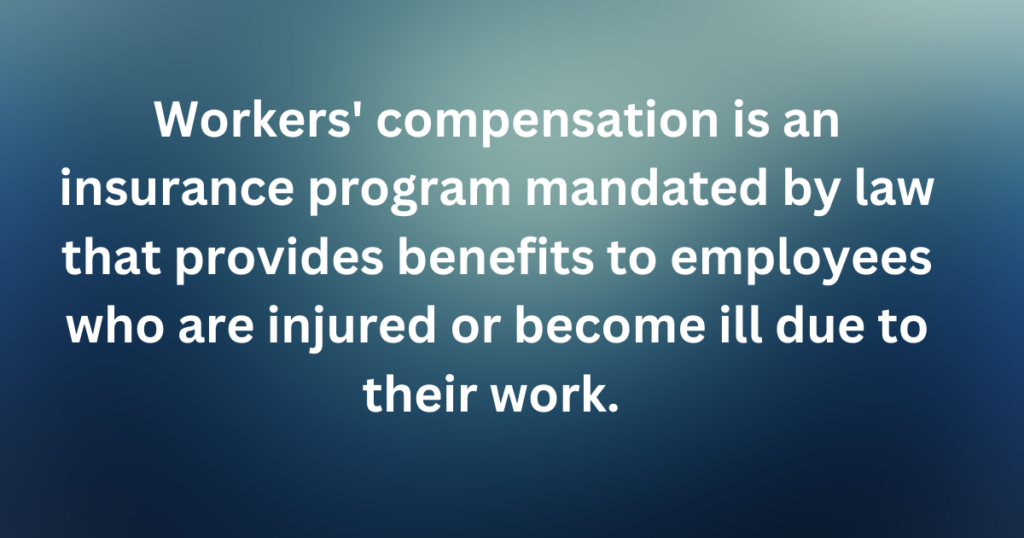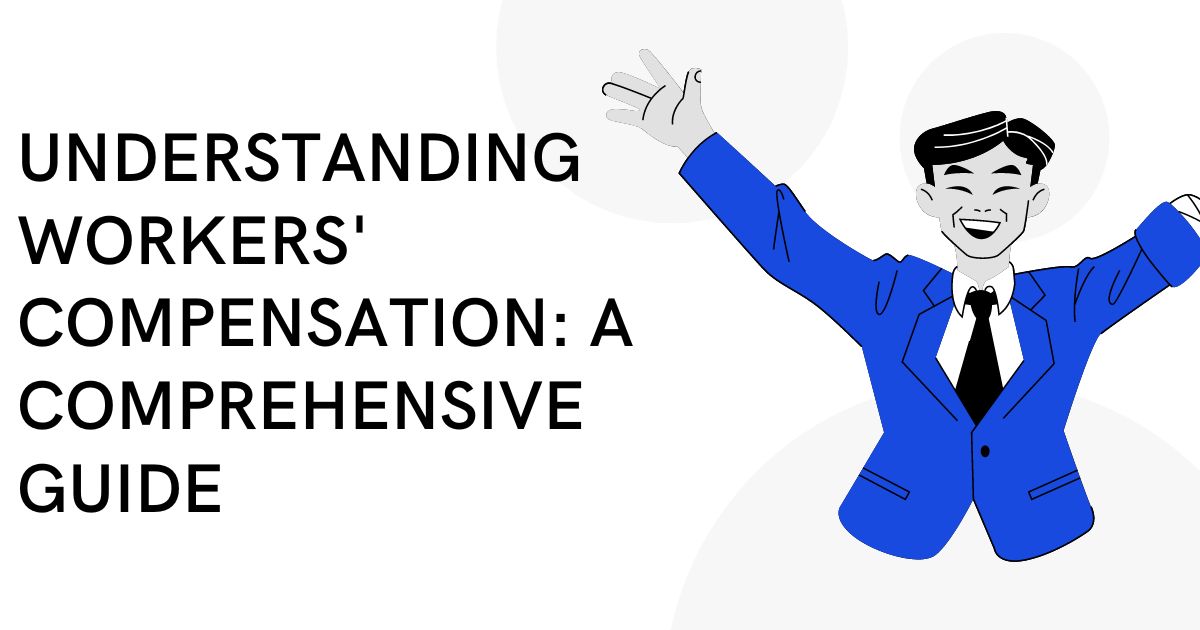Workers’ compensation is a vital component of labor law designed to protect employees who suffer job-related injuries or illnesses. This system provides financial and medical support to affected workers, ensuring they receive necessary care and compensation while maintaining job security. This guide will delve into the intricacies of workers’ compensation, including its purpose, benefits, eligibility criteria, and the claims process.
1. What is Workers’ Compensation?

Workers’ compensation is an insurance program mandated by law that provides benefits to employees who are injured or become ill due to their work. The program aims to cover medical expenses, lost wages, and rehabilitation costs, and in some cases, provide death benefits to the families of workers who die as a result of their job-related injuries.
The system operates on a no-fault basis, meaning that workers are eligible for benefits regardless of who was at fault for the injury or illness. In return, employees typically forgo the right to sue their employers for negligence related to the injury.
2. The Purpose of Workers’ Compensation
The primary goals of workers’ compensation are:
- Financial Protection: To provide financial support to employees who cannot work due to a work-related injury or illness.
- Medical Coverage: To cover medical expenses related to the treatment and rehabilitation of the injury or illness.
- Job Security: To ensure that injured employees can return to work without fear of losing their jobs.
- Legal Protection: To shield employers from litigation related to workplace injuries, thus reducing the risk of costly lawsuits.
3. Eligibility for Workers’ Compensation
Eligibility for workers’ compensation benefits depends on several factors, including:
- Employment Status: Most employees are covered by workers’ compensation, including full-time, part-time, and temporary workers. Independent contractors and freelancers typically are not covered unless they meet specific criteria set by state law.
- Nature of Injury or Illness: The injury or illness must be work-related. This includes accidents occurring on the job site, illnesses resulting from workplace conditions, and injuries sustained while performing job duties.
- Timeliness of Reporting: Injuries or illnesses must be reported to the employer within a specific time frame, which varies by state. Failing to report in a timely manner can result in denial of benefits.
4. Types of Workers’ Compensation Benefits
Workers’ compensation benefits are designed to address various needs of injured employees. The main types of benefits include:
Medical Benefits
Medical benefits cover the costs associated with treating work-related injuries or illnesses. This includes hospital bills, physician visits, prescription medications, physical therapy, and any necessary medical equipment. Workers are typically required to use healthcare providers approved by their employer’s insurance company, although some states allow employees to choose their own providers.
Wage Replacement Benefits
Wage replacement benefits, also known as disability benefits, provide a portion of an employee’s lost wages due to their inability to work. These benefits are usually calculated as a percentage of the worker’s average weekly wage before the injury, subject to state-specific maximums and minimums. There are different types of disability benefits:
- Temporary Total Disability (TTD): For workers who are completely unable to work for a short period.
- Temporary Partial Disability (TPD): For workers who can perform some job duties but cannot return to their full job responsibilities.
- Permanent Total Disability (PTD): For workers who are permanently unable to perform any work.
- Permanent Partial Disability (PPD): For workers who have sustained a permanent impairment but can still work in some capacity.
Vocational Rehabilitation
Vocational rehabilitation benefits assist injured workers in returning to suitable employment. This may include job training, career counseling, resume writing assistance, and other support services. The goal is to help workers gain new skills and find employment if they are unable to return to their previous job.
Death Benefits
If a worker dies due to a work-related injury or illness, workers’ compensation provides death benefits to the worker’s dependents. This typically includes funeral expenses and financial support to surviving family members, such as a spouse or children.
5. The Workers’ Compensation Claims Process
Navigating the workers’ compensation claims process can be complex, but understanding each step can help ensure a smooth experience. Here’s a general outline of the process:
Reporting the Injury
The first step in the claims process is reporting the injury or illness to the employer. This should be done as soon as possible, ideally within 24 to 48 hours of the incident. Failure to report promptly can result in delays or denial of benefits.
Seeking Medical Treatment
After reporting the injury, the next step is to seek medical treatment. Employees should visit a healthcare provider approved by the employer’s insurance carrier, unless state law allows for the choice of a provider. It’s essential to follow the doctor’s advice and keep detailed records of all medical treatments and expenses.
Filing a Claim
Once the injury is reported and medical treatment is underway, a formal workers’ compensation claim must be filed. This involves completing and submitting a claim form to the employer’s workers’ compensation insurance company or the state workers’ compensation board. The claim form requires information about the injury, medical treatment, and any lost wages.
Claim Review and Approval
After the claim is filed, the insurance company will review the information provided and determine whether the claim is valid. This process may involve an investigation into the circumstances of the injury, including interviews with the employee, employer, and medical providers. The insurance company is required to notify the employee of their decision within a specified time frame, usually 21 to 30 days.
Receiving Benefits
If the claim is approved, the insurance company will begin providing benefits according to the type of coverage specified. This includes medical treatment, wage replacement, vocational rehabilitation, and any other applicable benefits. It’s crucial to keep track of all payments and ensure that benefits are received as expected.
Appealing a Denied Claim
If a claim is denied, the employee has the right to appeal the decision. The appeal process involves submitting a formal request for reconsideration or a hearing before a workers’ compensation board or administrative law judge. The employee may need to provide additional evidence or documentation to support their case.
6. Common Workers’ Compensation Issues
Despite its benefits, workers’ compensation can present various challenges. Some common issues include:
Denied Claims
Claims can be denied for several reasons, including lack of sufficient evidence, missed deadlines, or disputes over whether the injury is work-related. If a claim is denied, it is essential to review the denial letter carefully and address any issues or discrepancies.
Delayed Payments
Delays in benefit payments can occur due to administrative issues, disputes over the claim, or other factors. Workers should follow up with their employer’s insurance company to ensure timely payment and address any issues promptly.
Fraud and Misuse
Workers’ compensation fraud can involve exaggerated or false claims of injury. Both employees and employers are subject to legal consequences if found guilty of fraud. To prevent misuse, insurance companies and regulatory agencies conduct investigations and audits.
7. Employers’ Responsibilities and Protections
Employers have several responsibilities under workers’ compensation laws, including:
- Providing Coverage: Employers are required to purchase workers’ compensation insurance or self-insure to cover potential claims.
- Posting Notices: Employers must display notices about workers’ compensation rights and procedures in a visible location at the workplace.
- Reporting Injuries: Employers are responsible for reporting work-related injuries to their insurance carrier and the appropriate state agency.
Employers also benefit from workers’ compensation as it protects them from lawsuits related to workplace injuries. By providing coverage, employers can reduce legal risks and maintain a safer work environment.
8. State-Specific Workers’ Compensation Laws
Workers’ compensation laws and regulations can vary significantly from state to state. Each state has its own workers’ compensation board or agency that oversees the program, sets benefit levels, and enforces compliance. It’s crucial for both employers and employees to understand their state’s specific requirements and procedures.
9. The Future of Workers’ Compensation
The workers’ compensation system continues to evolve in response to changes in the workforce, technology, and healthcare. Some emerging trends include:
- Telemedicine: The use of telemedicine for evaluating and treating work-related injuries is becoming more common, offering convenience and accessibility for injured workers.
- Workplace Safety Initiatives: Increased focus on workplace safety and wellness programs aims to reduce the incidence of workplace injuries and improve overall employee health.
- Data Analytics: Advanced data analytics are being used to track injury trends, predict risks, and optimize claims management processes.
Conclusion
Workers’ compensation is a crucial safety net for employees who experience job-related injuries or illnesses. By understanding its purpose, benefits, eligibility requirements, and the claims process, both employees and employers can navigate the system more effectively. Whether you’re an employee seeking support for a work-related injury or an employer aiming to ensure compliance, knowing the ins and outs of workers’ compensation is essential for maintaining a fair and effective workplace.
